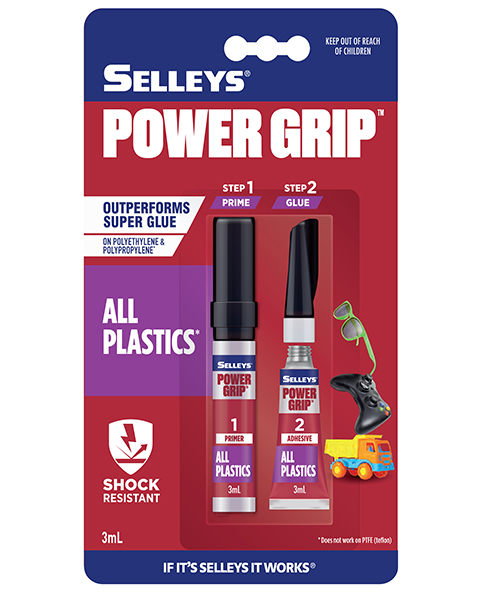| Author |
Message |
 |
|
|
 |
|
Advert
|
Forum adverts like this one are shown to any user who is not logged in. Join us by filling out a tiny 3 field form and you will get your own, free, dakka user account which gives a good range of benefits to you:
- No adverts like this in the forums anymore.
- Times and dates in your local timezone.
- Full tracking of what you have read so you can skip to your first unread post, easily see what has changed since you last logged in, and easily see what is new at a glance.
- Email notifications for threads you want to watch closely.
- Being a part of the oldest wargaming community on the net.
If you are already a member then feel free to login now. |
|
 |
![[Post New]](/s/i/i.gif) 2023/06/22 10:33:33
Subject: sticking 3d printed parts together?
|
 |

Longtime Dakkanaut
|
trying to assemble a few resin 3d printed parts, using superglue. having some issues. I'm guessing because the resin isn't as porous as a poured resin would be the glue doesn't key as well.
currently can apply the glue to the part, press parts together and a minute or so later it still hasn't stuck, the glue is still liquid and still perfectly able to stick to fingers/paws/curtains/passing cats etc.
is there some trick to preparing the surface to get glue to bind to it?
note it does, eventually, seem to bond, but not very well, e.g. parts coming apart at the join overnight
this is glue I have used on metal, poured resin, plastic, PLA etc without issue.
resign is Elegoo 4K fast resin if that matters.
I guess I could restructure the models in blender to print in one go however would be good to be able to assemble post printing for sub assemblies
|
|
|
 |
 |
![[Post New]](/s/i/i.gif) 2023/06/22 10:48:58
Subject: sticking 3d printed parts together?
|
 |

Decrepit Dakkanaut
UK
|
Are you scoring the joining surfaces prior to applying glue? I found with metal, cast and printed resin the best way is to cross hatch score the joining surfaces with a blade tip.
You make sure the model fits together as smooth and flush as possible, then score the joining surfaces to increase the angles and surface area for the superglue to work on.
If the parts lack a "key" and peg approach or slot and peg this might mean that you're basically dealing with two flat surfaces so the glue doesn't have as many angles to make a binding hold with.
You might also look into "pinning" if some parts are particularly large. This again increases the angles and surface area to produce a much stronger bonding.
|
|
|
|
 |
 |
![[Post New]](/s/i/i.gif) 2023/06/22 11:26:44
Subject: sticking 3d printed parts together?
|
 |

Longtime Dakkanaut
|
 Overread wrote: Overread wrote:Are you scoring the joining surfaces prior to applying glue? I found with metal, cast and printed resin the best way is to cross hatch score the joining surfaces with a blade tip.
You make sure the model fits together as smooth and flush as possible, then score the joining surfaces to increase the angles and surface area for the superglue to work on.
If the parts lack a "key" and peg approach or slot and peg this might mean that you're basically dealing with two flat surfaces so the glue doesn't have as many angles to make a binding hold with.
You might also look into "pinning" if some parts are particularly large. This again increases the angles and surface area to produce a much stronger bonding.
cheers, hadn't keyed them as I expected the glue to soak in a bit, this is stuff like arms on a marine body so not huge bits, will keep pinning in mind
fired up blender to do a bit of digital glue and try printing in a smaller number of parts, also trying to add location pegs etc which may help with holding but will score before gluing more
|
|
|
 |
 |
![[Post New]](/s/i/i.gif) 2023/06/22 11:53:56
Subject: sticking 3d printed parts together?
|
 |

Decrepit Dakkanaut
UK
|
I've found with scoring it makes a massive improvement to the speed at which superglue makes a tacky bonding enough to hold parts on its own. Without it the glue can kind of form a layer between the two surfaces and slides; with scoring it locks in much faster.
|
|
|
|
 |
 |
![[Post New]](/s/i/i.gif) 2023/06/22 12:20:40
Subject: sticking 3d printed parts together?
|
 |

Brigadier General
|
A bit of skin oil might also be impeding the join. A quick swab with rubbing alcohol might assist.
Scoring with a quick scrape on rough sandpaper is definitely recommended also.
|
|
|
|
 |
 |
![[Post New]](/s/i/i.gif) 2023/06/22 18:16:02
Subject: sticking 3d printed parts together?
|
 |

Wondering Why the Emperor Left
|
I had that issue with the resin that came with my printer, I used glue on one side, and Zip Kicker on the other, and it worked great.
|
|
|
 |
 |
![[Post New]](/s/i/i.gif) 2023/06/22 20:52:03
Subject: Re:sticking 3d printed parts together?
|
 |

[MOD]
Making Stuff
|
I use a super glue with a primer, like this:

(Just an example, there are various brands, and they all seem to do more or less the same thing)
The 'pen' component is a primer that you paint onto both parts to be glued, and then apply the glue and press the parts together. Grabs almost instantly and makes a really strong bond.
|
|
|
|
 |
 |
![[Post New]](/s/i/i.gif) 2023/06/22 21:41:24
Subject: sticking 3d printed parts together?
|
 |

Longtime Dakkanaut
|
Super glue accelerator really helps with 3d printed parts, also.
|
|
|
|
 |
 |
|
|